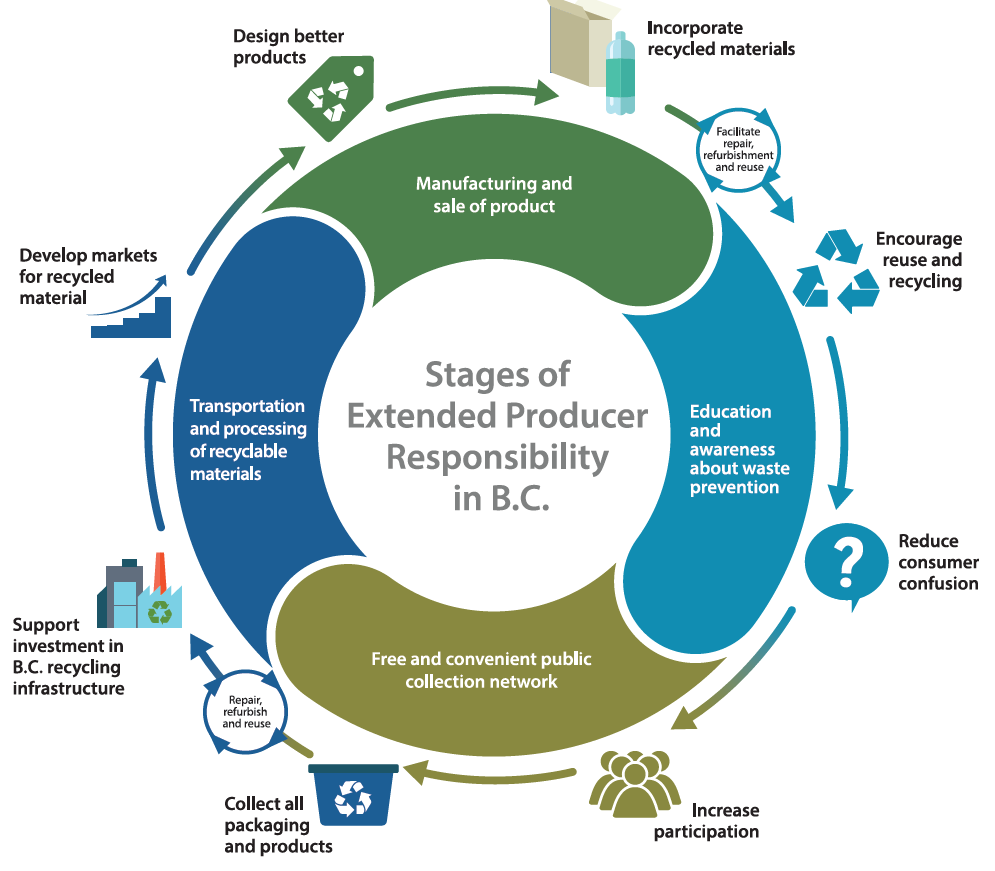B.C.'s recycling system (EPR) and regulations
Learn more about how B.C. producers of regulated products manage their product's lifecycle as part of the Extended Producer Responsibility plan.
On this page
B.C.'s EPR recycling system
In B.C., producers of regulated products are responsible for managing their products' lifecycle as part of an industry-led approach called Extended Producer Responsibility (EPR).
EPR is the system that collects and recycles certain products across the province. The system includes the whole life cycle management, not just recycling.
It starts from the beginning of the product's design and continues through to the end of the product's life.
EPR stages

EPR benefits
Benefits of the EPR recycling system include:
- Promoting the design of more reusable and recyclable products
- Improving access to province-wide recycling programs for products
- Reducing waste being sent to landfills and impacting the environment
- Moving the cost of recycling from local and Indigenous governments and taxpayers to the producers and consumers of products
Funding for recycling programs
Most EPR programs are funded by charging a consumer a non-refundable fee for the collection and management of that product.
Examples of non-refundable fees:
- Eco fees
- Container Recycling Fees (CRF)
- Environmental Handling Fees (EHF)
Regulating product recycling
The Recycling Regulation sets requirements for obligated producers to collect and manage their regulated products.
To meet these requirements, an obligated producer must have a recycling plan or join a recycling program run by an agency that acts on their behalf.
Producer responsibilities
Producer responsibilities include:
- Collecting from households and through collection facilities
- Reuse and recycling products
Review producer responsibilities and plans to learn more about how producers and the province work together to recycle products.
Product expansion
When the regulation is expanded to include a new product category, the new item may fall under one of the existing regulation schedules.
If the item does not fall under an existing schedule, a new schedule might need to be added.
Visit advancing recycling in B.C. and read the EPR 5-Year Action Plan to learn about the government's priority actions to further B.C.'s position as a leader in EPR and waste prevention.
Regulated products
To find out what products are accepted in your local recycling program:
Non-regulated products
If there's a non-regulated product you want to recycle:
- Check with your regional district to see if there's a local recycling program available
